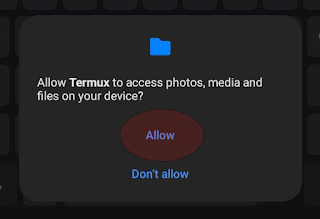Analysis of Reverse Image Search Engines (GTL - October 2024)
Reverse image searching allows you to find information about an image by using the image itself as the search query.
Typically, the output of a reverse image search includes:
- Identical photos to the one you searched.
- Edited versions of your photo, which may have been flipped, cropped, rotated, or had colour adjustments.
- Photos that are similar to your search photo.
Each photo is associated with the page it was retrieved from, allowing you to click through to the source page.
The use cases for reverse image searches are comparable to those for text searches, meaning they are limited only by the imagination and needs of the searcher. Here are a few examples:
- Commerce: You see a photo of an item that interests you and you would like to trace the online store to order that item.
- Consumption: You would like to use a photo in your work but need a higher resolution version or want to check whether there are similar (better) photos than yours.
- Copyright: You would like to check the copyright associated with a photo, either because you’re the copyright holder or because you would like to use it in your work.
- Curiosity: Where was that photo taken? What plant is that? What is that dish called? Who is that celebrity?
- Chicanery: Is this a photo of the person they claim to be? Is this photo manipulated? This topic was one of the reasons why this article was organised around human searches. Read more about this topic at this link.
Evaluation
The evaluation comprised 16 photographs of individuals:
- 12 images downloaded in June 2024
- 1 unpublished photo of the author
- 3 AI-generated images
Metadata was stripped from 50% of the photos (process detailed below). These photos had "NMD" appended to their filenames.

The following reverse image search engines were compared:
- Baidu Images
- Google Images
- Lenso.ai
- TinEye
- Bing Images
- Yandex Images
Notes:
- Some engines implemented automatic cropping mechanisms for reverse image searches. I used the default selection made by each engine without adjustments and scored the results accordingly.
-
Only free versions of the engines were tested. Engines requiring payment or credit card information were either excluded or tested using an unlogged (free) account.
-
Results differed between private (not logged in) sessions and logged-in sessions. I conducted searches using logged-in accounts.
- Result presentation varied among engines. Some brought up the different sources on the results screen, while others showed only one match, requiring users to click a button or link in order to arrive at the sources. This behaviour was not factored into the scoring, although it could potentially lead to misinterpretation by users familiar with text search engines.

How Engines were scored
Each engine was scored as follows:
Exact Match
Score: 40 if the image was found, otherwise 0.
Match Features
Score: 30 if the engine finds an exact match; otherwise, a score < 30 to reflect whether the engine can find similar photos based on hair colour and style, eye colour, face, build, and, to a lesser extent, clothing.
Multiple Sources of the image
Score: 30 if more than one source was found, otherwise 0.
The Result
| Engine | Score |
|---|---|
| https://images.google.com/ | 92.8 |
| https://lenso.ai/en | 85.2 |
| https://tineye.com/ | 81.8 |
| https://yandex.com/images/ | 75.4 |
| https://www.bing.com/images/feed | 73.5 |
| https://images.baidu.com/ | 56.4 |
Conclusion
For an engine to be considered reliable, it must score at least 70. Based on the data I used, all engines except Baidu achieved this score. For serious topics, it is advisable to check against multiple engines. Since different engines are trained on various data sets and use different algorithms, this increases the likelihood of finding a match.
Appendix
How Meta Data was striped
Each even numbered photo had its meta data removed. This was done by:
- Right-clicking on the photo.
- Selecting Properties.
- Selecting Details.
- Selecting Create a copy with all properties removed.
- Pressing the OK button.
The photo was renamed to end with - NMD (No Meta Data).

Data
The photos, screen shots of the output from the different image search engines and analysis are available for download from https://github.com/chribonn/Analysis-of-Reverse-Image-Search-Engines.







Not shilling a product or in any way involved in the development, but I've been using a multi-platform browser extension that makes reverse image searching on multiple sites a lot more convenient:
ReplyDeletegithub.com/dessant/search-by-image
I just wish Google/Bing image search was less focused on finding relevant products, and more on finding relevant results...